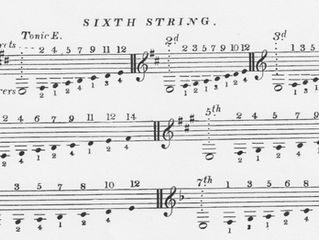

Open Chords - Different Fingering Options
When playing an open chord on the guitar, there is often more than one option for its fingering. This is actually an important concept as...


Johnny B. Goode
The influence of Chuck Berry on all rock guitarists is, in my opinion, undeniable. I am fully aware that my lead playing owes a huge debt...


How Music Works
I read How Music Works by David Byrne last summer and was very inspired by it. If you love music, the creative process involved in making...


Scales On One String
As guitarists, we mostly think of scales as patterns in two dimensions across all six strings in one location on the neck at a time. We...
























